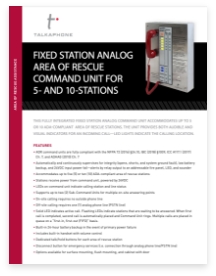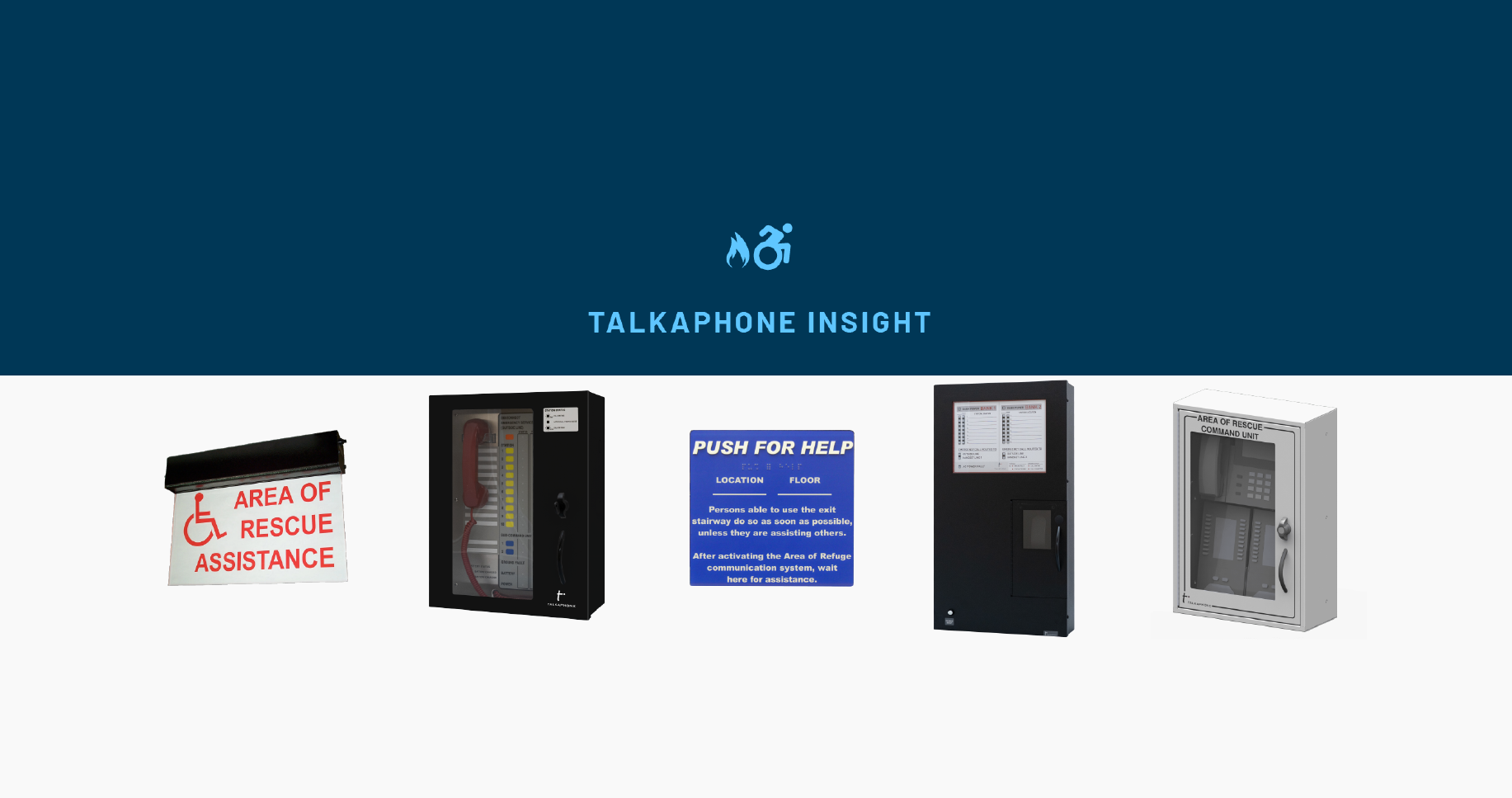When designing, constructing, and managing a building, ensuring the safety and accessibility of everyone inside is paramount. One critical aspect of this is the Area of Refuge (AOR) system, which provides a safe location for individuals with mobility impairments to wait in the event of an emergency evacuation. Understanding the Area of Refuge requirements for these systems is crucial for compliance with building codes and for safeguarding vulnerable individuals during a crisis. We will explore what an AOR system is by answering six basic questions to ensure your building meets the necessary requirements for effective and reliable emergency response.
1. Question: What is an Area of Rescue or Area of Refuge?
Answer: The National Fire Alarm and Signaling Code NFPA 72 defines an Area of Refuge Assistance (or Area of Rescue Assistance) as areas that have direct access to an exit, where people who are unable to use stairs can remain temporarily in safety to await further instructions or assistance during emergency evacuation or other emergency situations. It is, therefore, important that a method to communicate between that remote location and a central control point where appropriate action for assistance can be initiated.
As such a two-way emergency communication system is required either at the Area of Refuge or at each elevator landing in order to provide communication (with audible and visual signals) from the Area of Refuge to a central control point (e.g., fire command center, etc.), a constantly attended location, a monitoring location, or 911.
2. Question: What is the difference between an Area of Rescue, an Area of Rescue Assistance, and an Area of Refuge?
Answer: These terms are all synonymous with each other and essentially mean the same thing. The Americans with Disabilities Act (ADA) originated the term “Area of Rescue Assistance," though this term has become outdated over time and is usually referred to as an “Area of Refuge” or "Area of Rescue." More recently, the National Fire Protection Association (NFPA) and the International Building Code (IBC) have adopted the term "Areas of Refuge." Other terms that are also often used include “two-way emergency communication system” or "two-way communication system for buildings".
3. Question: Where should an AOR Command Unit be installed?
Answer: NFPA 72 (2022 Edition) states: The central control point is typically the fire command center in high-rise buildings. In low-rise or other buildings not provided with a fire command center, the central point can be any other location approved by the authority having jurisdiction (also known as the AHJ) such as an entryway or lobby.
4. Question: How many AOR Call Stations or two-way emergency communication devices are required?
Answer: The International Building Code (IBC) requires that Areas of Refuge (Rescue Assistance) shall be provided with a two-way communication system and that it shall be provided at the landing serving each elevator or bank of elevators on each accessible floor that is one or more stories above or below the level of exit discharge. The actual requirement may vary depending on jurisdiction—please contact your local AHJ or Fire Marshal for further information.
5. Question: Does an AOR system installation require certification or licensing?
Answer: The answer will vary from jurisdiction to jurisdiction—the best approach is to contact the AHJ or Fire Marshal to ask if specific fire/life safety submittal forms or permits are required for a two-way emergency communication system.
6. Question: A building owner/operator is insisting that a standard intercom system can be installed instead of a proper two-way emergency communication system—is this true?
Answer: It is almost certain that a standard intercom system will not meet the requirements of local building code, IBC, or NFPA. These general intercom systems are not code compliant and typically do not meet the following criteria (varies depending on the jurisdiction and the adopted code):
- Battery backup supporting 4- or 24-hour standby with 5-minutes, 15-minutes, or 4-hours of maximized active use
- NFPA 72 requirements for supervision
- Pathway survivability of Level 2 or 3
- Pre-recorded physical location audio message that plays after the call has been answered
- Audible and visual indicators for system activation and operation
- Audible and visual indicators for supervision faults
Implementing an effective Area of Refuge system is not only a legal requirement but a vital component of a building emergency preparedness plan. By understanding the key Area of Refuge requirements and following best practices, you can ensure that all individuals, regardless of mobility, have a controlled, safe, and reliable means of refuge and two-way communication during an emergency. Proper placement, communication, and regular maintenance/testing will ensure a safer environment for everyone. Prioritizing AOR system compliance and functionality will ultimately contribute to a building that is more accessible, safer, and ready to respond in the face of an emergency.
Talkaphone’s Area of Refuge (AOR) solutions provide effective and reliable two-way, hands-free communication from either an elevator landing or stairway to the fire command center. These systems are fully compliant with NFPA 72, IBC, ADAAG, and ICC A117.1 Ch. 7—these solutions can also be configured to meet amendments and other local codes. For more information on AOR solutions, visit our Resources for Specifiers page or contact us for more information.













